Struggling with wardrobe doors that stick, squeak, or fail? This common problem can ruin a great furniture piece. Choosing the right pulley is key to ensuring smooth, long-lasting performance.
Wardrobe pulleys are primarily classified by their material—such as metal, rubber, or fiberglass—and the type of slide rail system they operate on, including roller, steel ball, and bottom-supported slides. Each combination offers distinct levels of smoothness, load capacity, and quietness for your specific needs.
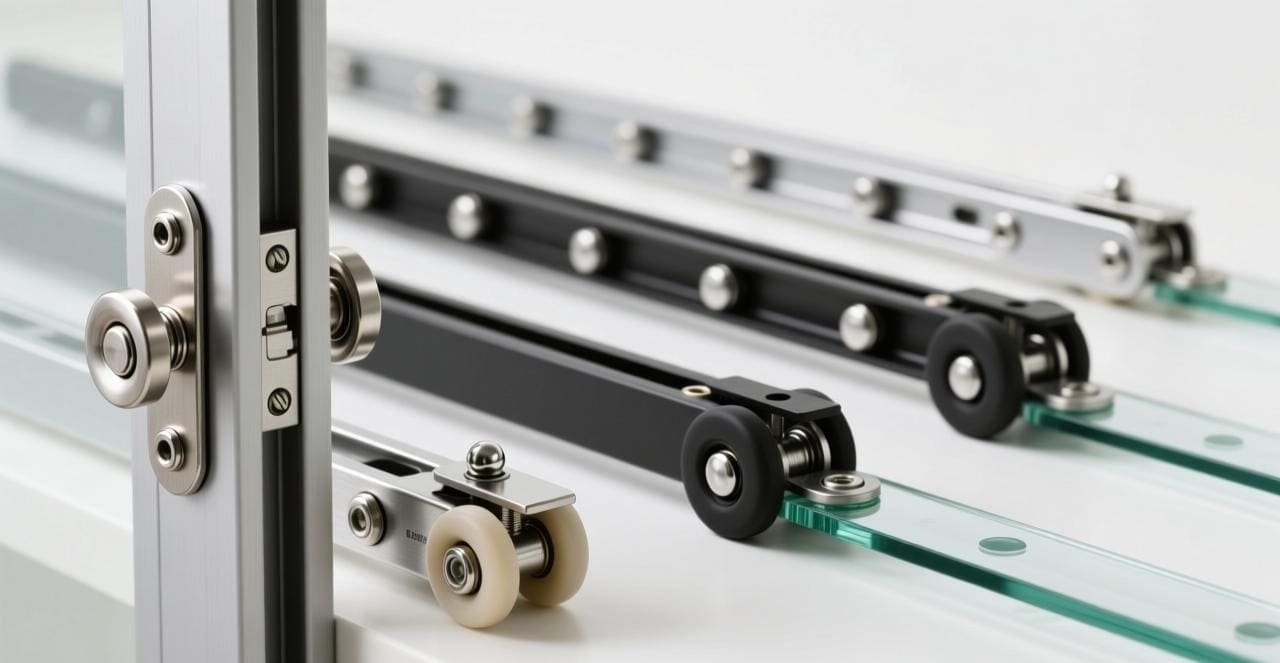
But knowing the basic categories is just the beginning. As a buyer, you need to understand the fine details to make the most cost-effective decision for your production line. Getting this right means fewer customer complaints and a better reputation for quality. Let’s dive deeper into what makes each type unique, so you can choose with confidence.
What are the classification of pulleys by material?
Choosing the wrong material for a pulley seems like a small detail. But this choice directly impacts the door’s feel and lifespan, potentially leading to costly replacements and unhappy end-users.
Pulleys are often classified by their core material. The most common types are metal for heavy-duty strength, specialized rubber wheels (made from nylon or carbon glass fiber) for silent operation, and fiberglass for a balanced, all-around performance. Your choice depends on the project’s specific demands.
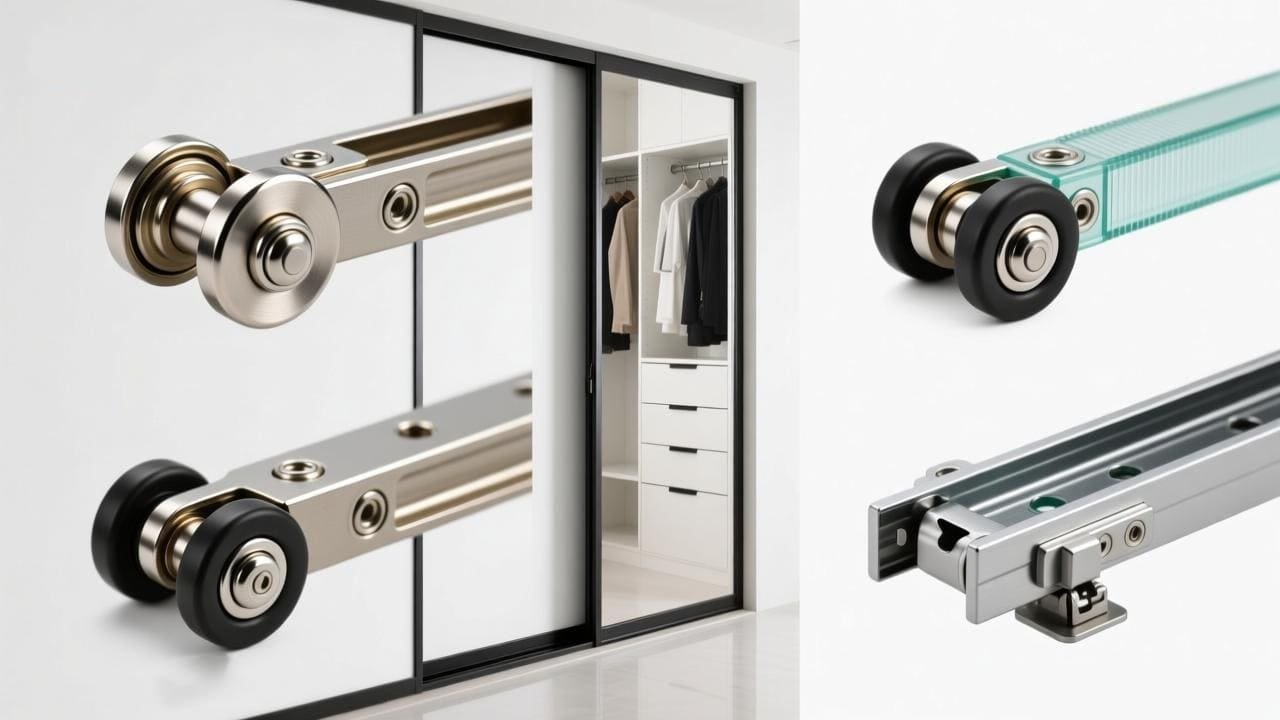
When I work with clients like Jacky, who purchase for large-scale furniture production, the conversation always turns to materials. It’s a critical decision point that balances cost and quality. A budget project might be fine with one material, while a premium line demands another. Understanding the differences is essential. For instance, metal is fantastic for load-bearing but can be noisy without proper housing. In contrast, fiber-based wheels offer an incredibly quiet glide.
Here’s a simple breakdown to help you decide:
| Material Type | Key Feature | Best For |
|---|---|---|
| Metal | High load-bearing capacity | Heavy doors, commercial use |
| Rubber (Nylon/Carbon Fiber) | Extremely quiet and smooth operation | High-end residential wardrobes |
| Fiberglass | Durable, smooth, and resists deformation | All-purpose, reliable performance |
I once had a customer who insisted on using the cheapest available option for a set of heavy mirrored doors. Within a year, they were back with complaints of grinding noises and doors getting stuck. We switched them to a metal pulley system designed for the weight, and the problem was solved. This experience taught me that matching the material to the application isn’t just a recommendation; it’s a necessity for long-term satisfaction.
What are the different types of pulley machines?
A high-quality pulley is only half the solution. If you install it on a weak or mismatched track system, the entire mechanism will fail, frustrating the end-user and damaging your product’s reputation.
In the context of wardrobes, "pulley machines" really refer to the slide rail systems. The main types are basic roller slides, more advanced steel ball bearing slides, and premium bottom-supported slides. Each system provides a different level of smoothness, stability, and durability for the wardrobe door.
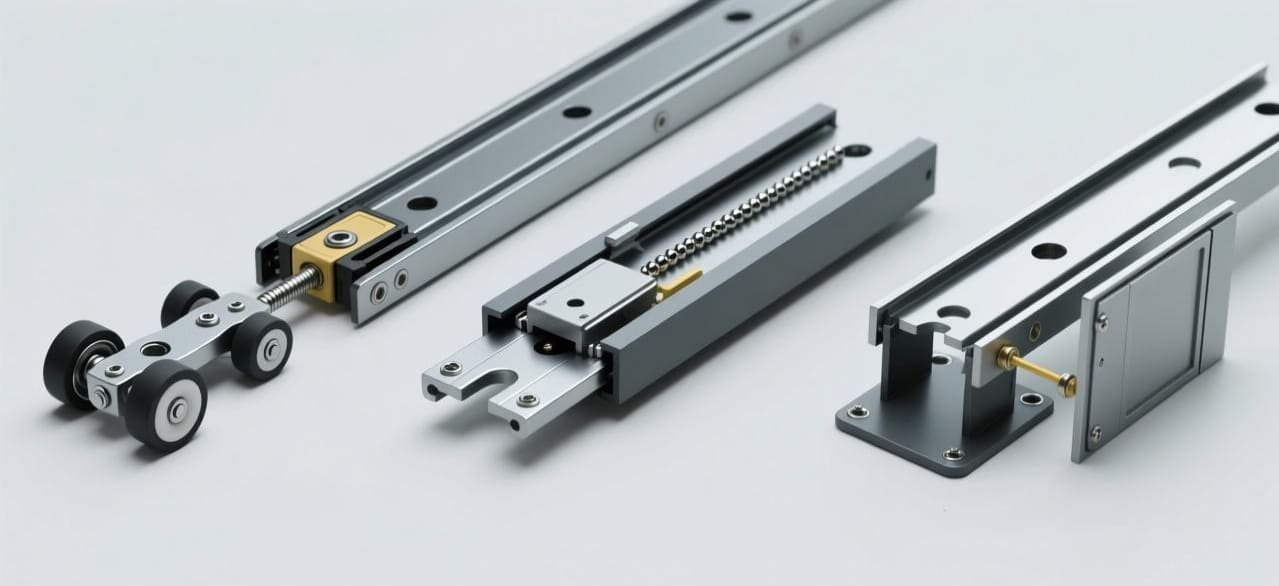
The slide rail is the backbone of the entire sliding door experience. The choice here is just as important as the pulley material. When purchasing for a factory, you need to consider the final product’s market position. Is it a budget-friendly flat-pack item or a piece of luxury furniture? The answer determines the right system. Roller slides are simple and cost-effective for basic needs. However, for a truly smooth and stable feel, steel ball bearing slides are a significant step up. They distribute the door’s weight more evenly and reduce friction, which is something a discerning customer will notice immediately. For top-tier projects where aesthetics are paramount, bottom-supported slides are hidden from view and provide an exceptionally clean look with silent operation.
| Slide System Type | Primary Characteristic | Common Application |
|---|---|---|
| Roller Drawer Slide | Simple, one pulley on two tracks | Computer keyboard trays, light drawers |
| Steel Ball Structure Slide | Smooth, stable, and durable | Standard to high-quality wardrobe doors |
| Bottom-Supported Slide | Hidden, quiet, often self-closing | Premium, heavy-duty wardrobe doors |
What are the different types of drive pulleys?
Have you ever used a wardrobe door that was difficult to push or one that slammed shut? This poor user experience directly reflects on the perceived quality of the entire furniture piece.
In wardrobes, the "drive pulley" or drive mechanism refers to how the slide system functions. A simple roller system provides a basic push-pull drive. More advanced steel ball and bottom-supported systems deliver a smoother drive and can include features like soft-close for a controlled, premium feel.
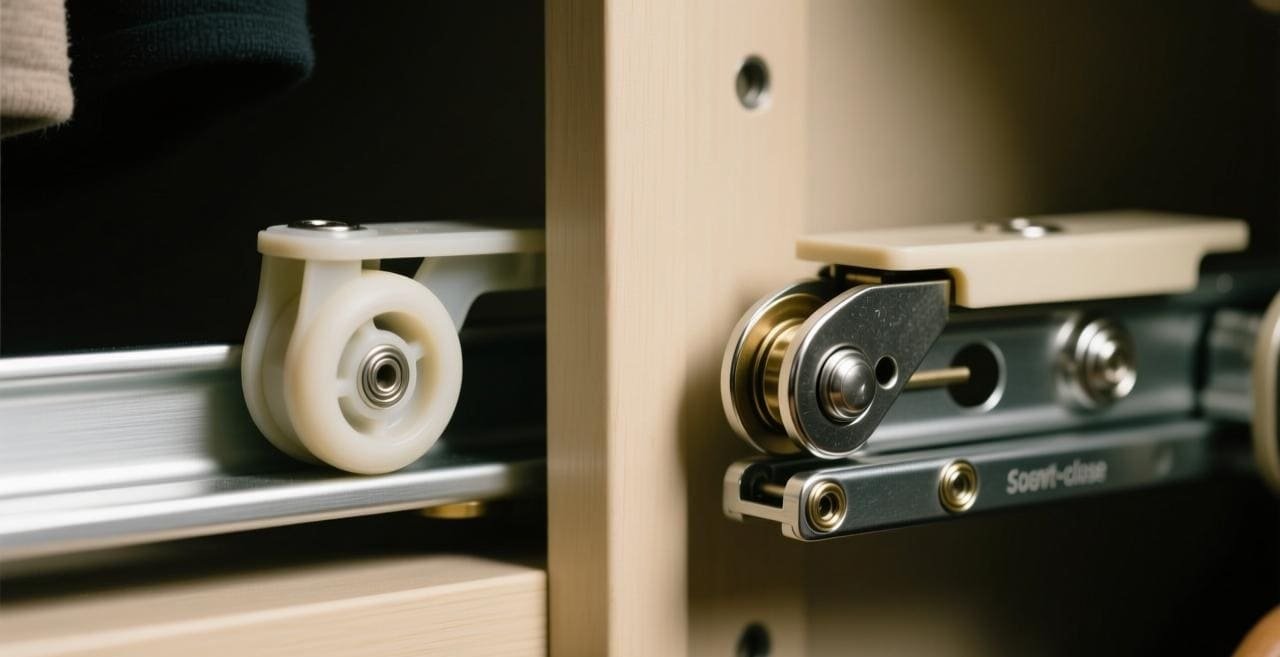
The "drive" is all about how the door feels to the user. This is where you can truly differentiate your product. A basic roller slide works, but it lacks refinement. The user feels all the friction. When you upgrade to a steel ball bearing system, the drive becomes almost effortless. The precision steel balls roll smoothly within the track, dispersing force and dramatically reducing the effort needed to move the door. This is a huge selling point.
For clients looking to enter the premium market, I always recommend systems with integrated soft-close or self-closing features. These are advanced drive mechanisms that take control in the last few inches of travel, gently and silently pulling the door closed. It prevents slamming, protects the frame, and adds a touch of luxury that customers love. It’s a small detail in the grand scheme of a wardrobe, but it’s a feature that speaks volumes about the overall quality of your product. As a factory, we can integrate these systems to help your products stand out.
What are the three different types of pulley systems?
Faced with multiple options, how do you choose the most cost-effective pulley system? Overspending on unnecessary features hurts your margins, but cutting the wrong corner leads to product failure.
The three main pulley systems for wardrobes can be tiered as: 1) Basic Roller Slides for budget projects, 2) Mid-Range Steel Ball Slides for a significant upgrade in smoothness and life span, and 3) Premium Bottom-Supported Slides for high-end applications with invisible, silent hardware.
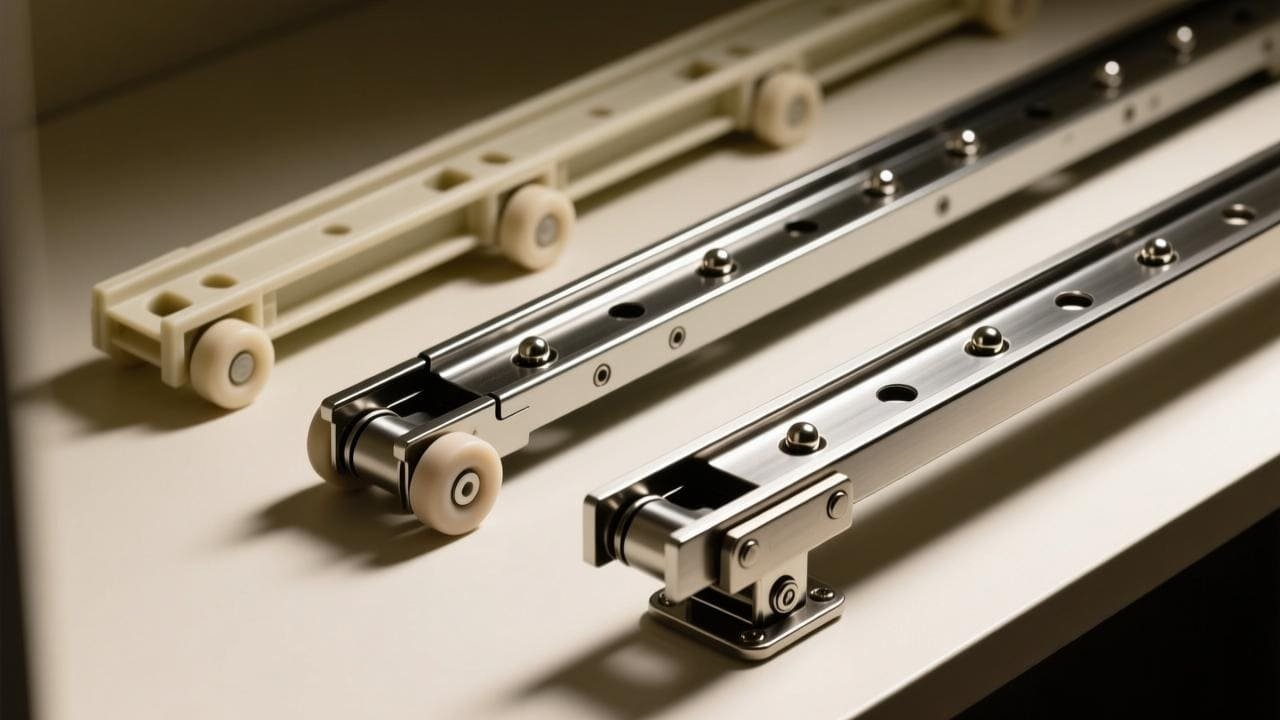
As a purchasing manager like Jacky, your goal is to find the sweet spot between price and performance. Thinking of the systems in a "Good, Better, Best" framework can simplify this decision.
1. Good: Roller Slides. This is your entry-level solution. It’s simple, consisting of a plastic roller on a track. It gets the job done for lightweight doors and applications where cost is the primary driver, like in ready-to-assemble furniture.
2. Better: Steel Ball Slides. This is the industry standard for quality furniture. The steel bearings provide a much smoother, quieter, and more stable glide. They can handle more weight and last significantly longer than roller slides. For most residential and commercial projects, this system offers the best return on investment.
3. Best: Bottom-Supported Slides. This is the premium choice. The hardware is concealed at the bottom of the drawer or door, creating a clean, high-end look. These systems often include soft-close technology and offer the smoothest, most silent operation available. They are ideal for luxury custom cabinetry and designer furniture.
I always advise my clients to match the system to their brand promise. By offering all three tiers from our factory, we empower you to build a diverse product line that caters to every segment of the market.
Conclusion
Choosing the right wardrobe pulley means looking at both the material and the slide system. This knowledge helps you select durable, smooth, and cost-effective hardware for any project.

